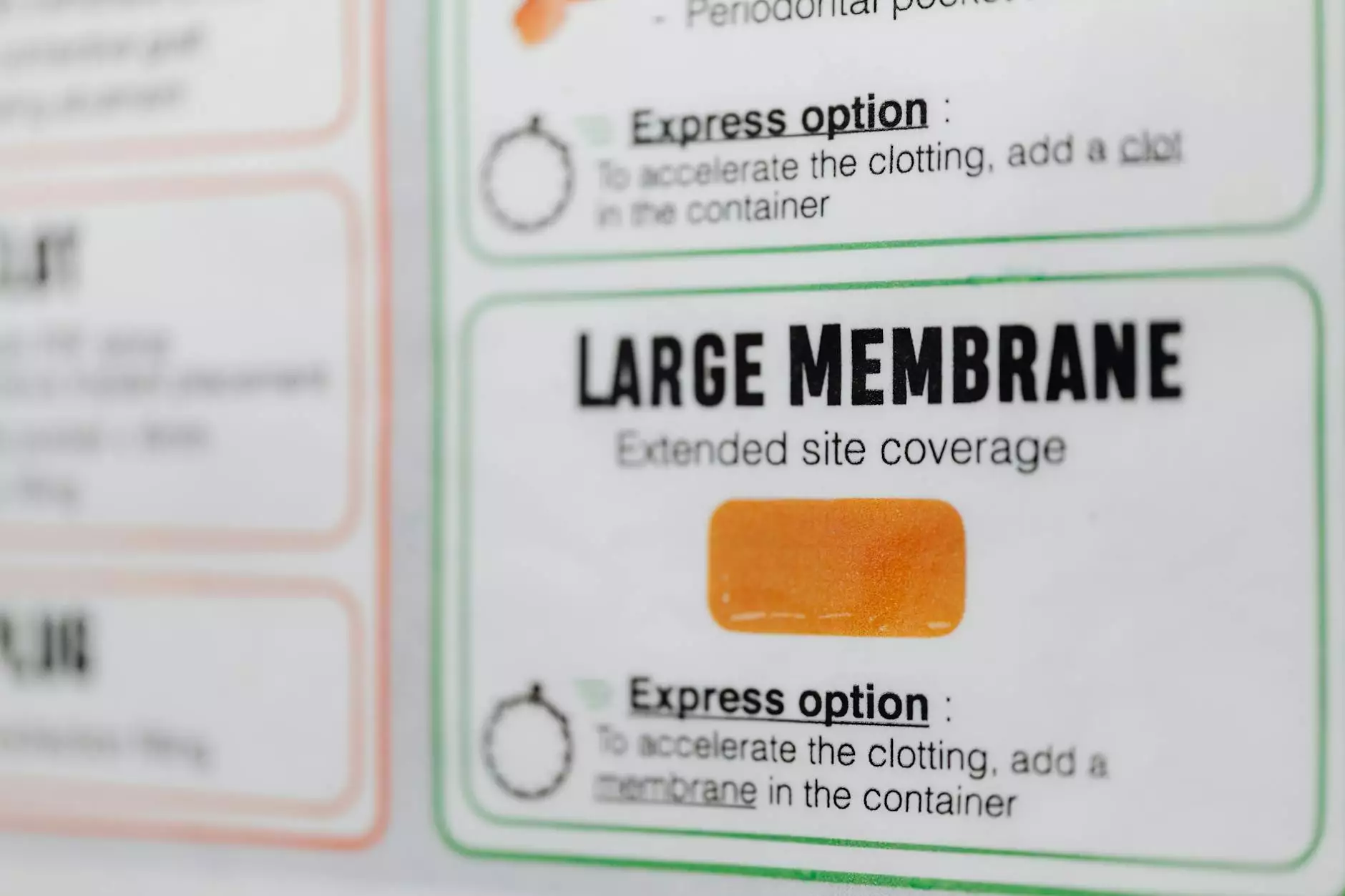DVT Blood Clots: Understanding, Prevention, and Treatment

Deep vein thrombosis (DVT) is a condition that can pose serious health risks and is often misunderstood. It occurs when a blood clot forms in a deep vein, commonly in the legs. Understanding dvt blood clot is crucial for both prevention and treatment, as timely action can save lives. In this comprehensive guide, we will explore the causes, symptoms, risk factors, diagnosis, prevention strategies, and treatment options related to DVT blood clots.
What is DVT?
Deep vein thrombosis refers to the formation of a blood clot in a deep vein, most frequently in the legs. It is essential to grasp the implications of DVT since it can lead to severe complications, including pulmonary embolism (PE) if the clot dislodges and travels to the lungs.
Understanding Blood Clots
Blood clots are a natural part of the body's healing process. They form to stop bleeding when a blood vessel is injured. However, when a clot forms inappropriately or does not dissolve when it should, it can lead to dangerous health issues, including DVT. The process of clot formation is known as coagulation and primarily involves platelets and proteins in the blood.
Symptoms of DVT Blood Clots
Recognizing the symptoms of a dvt blood clot can be challenging because they may not always be present. The most common signs include:
- Swelling: Typically in one leg, the affected area may feel tender and swollen.
- Pain or Tenderness: Often described as a cramp or soreness, which can be severe.
- Red or Discolored Skin: The skin around the area of the clot can become discolored, appearing red or blue.
- Warmth: The affected area may feel warmer to the touch than the surrounding skin.
It is crucial to consult a healthcare provider if you suspect you have DVT, as untreated clots can lead to serious complications.
Risk Factors for DVT
Several factors can increase the likelihood of developing a dvt blood clot. These include:
1. Prolonged Immobility
Long periods of inactivity, such as during long flights or bed rest after surgery, can increase DVT risk.
2. Surgery and Injury
Recent surgery, especially hip or knee surgeries, or significant injuries can cause blood clots to form.
3. Medical Conditions
Conditions such as cancer, heart disease, and inflammatory bowel disease can contribute to an increased risk of DVT.
4. Age
Individuals over 60 are at higher risk, although DVT can occur at any age.
5. Hormonal Factors
Hormonal changes, such as those from pregnancy, hormone replacement therapy, or birth control pills, can affect blood clotting.
6. Obesity
Excess weight increases pressure in the veins and can contribute to the likelihood of developing blood clots.
Diagnosis of DVT
Healthcare providers use several methods to diagnose dvt blood clot, including:
- Ultrasound: The most common test, using sound waves to create images of the blood flow in the veins.
- D-dimer Test: A blood test that measures a substance released when a blood clot breaks up; elevated levels may suggest DVT.
- Venography: An X-ray test that involves injecting a contrast dye into the veins to visualize clots.
Preventing DVT Blood Clots
Preventing DVT is vital, especially for those at increased risk. Here are some effective strategies:
1. Stay Active
Regular physical activity enhances blood circulation and helps prevent clots. It is especially important to move around regularly during long trips.
2. Leg Exercises
Performing leg exercises, such as flexing and extending your ankles, can promote circulation when sitting for a long time.
3. Compression Stockings
Wearing compression stockings can help reduce the risk of DVT by improving blood flow in the legs.
4. Hydration
Staying well-hydrated can help thin the blood and reduce the risk of clot formation.
5. Avoid Smoking
Smoking is a significant risk factor for blood clots as it damages blood vessels. Quitting smoking can reduce the risk of DVT.
Treating DVT Blood Clots
If diagnosed with dvt blood clot, treatment options may include:
1. Anticoagulants
Medications such as warfarin, heparin, or newer oral anticoagulants (NOACs) help prevent the clot from growing and reduce the risk of new clots forming.
2. Thrombectomy
In some circumstances, a doctor may perform a procedure to remove the clot, especially if it is causing severe symptoms or complications.
3. Compression Therapy
Using compression stockings can help reduce swelling and alleviate symptoms by promoting blood flow.
4. Lifestyle Changes
Adopting a healthy lifestyle, including a balanced diet, regular exercise, and maintaining a healthy weight, can help prevent further complications related to DVT.
The Importance of Regular Check-Ups
Regular medical check-ups are essential, especially for individuals who have experienced DVT or are at high risk. Ongoing monitoring can help detect any changes in your condition and guide appropriate treatment.
Conclusion
Understanding dvt blood clot is critical for prevention and treatment. With knowledge of the symptoms, risk factors, and available treatment options, individuals can take proactive steps to protect their health. At Truffles Vein Specialists, we are committed to providing expert care and resources to help our patients manage and prevent DVT effectively. Always consult your healthcare provider if you suspect you have DVT or have concerns about your risk factors.
Contact Us
If you have more questions about DVT, blood clots, or vascular health, contact us at Truffles Vein Specialists. Our experienced team is here to help you understand your health and achieve your wellness goals.



